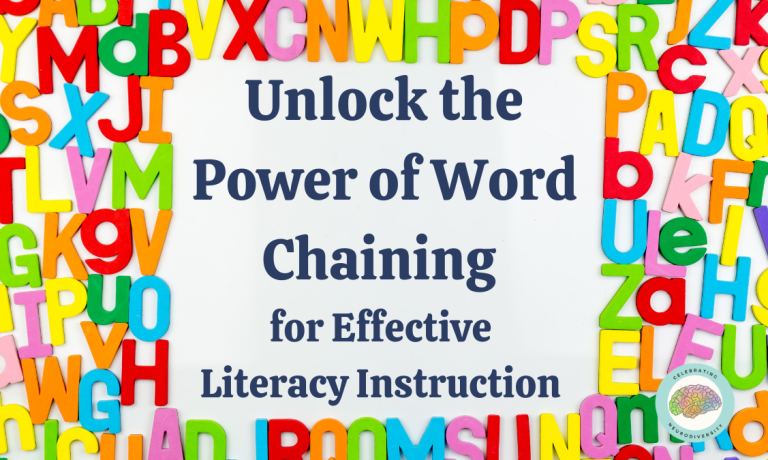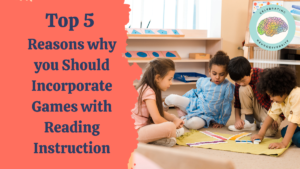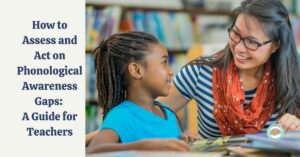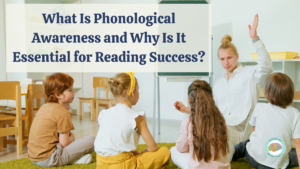Word chaining is a powerful way for students to develop their phonemic awareness and phonics skills at the same time! When students create word chains they are segmenting, blending, comparing, deleting, adding, or substituting sounds while connecting those sounds with letters for both decoding (reading) and encoding (spelling) in a multisensory way. The students are taking time to notice similarities and differences among words, making needed connections for orthographically mapping words to permanent memory. This is what makes it such a powerfully beneficial task for students.
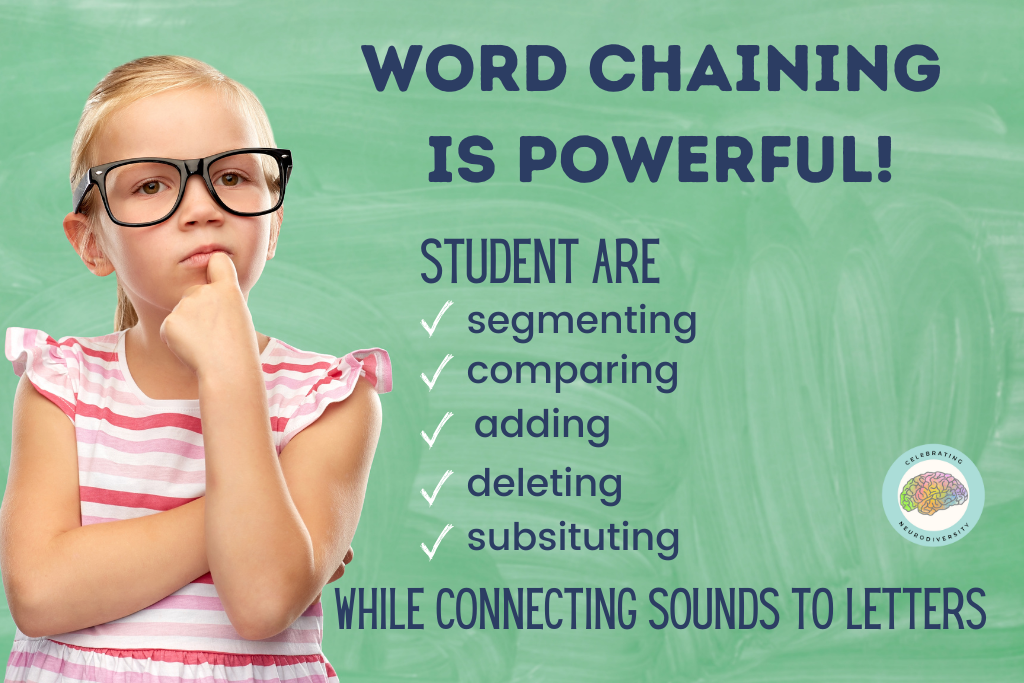
What are word chains?
Word chains start with a word and only one sound is changing at a time. For example, cat- mat-map-mop. Words can change by the first sound, final sound, or middle sound. Words can also be changed by adding a sound (lip-flip) or omitting a sound (drip-dip). Only previously taught phonics skills are used in word chains.
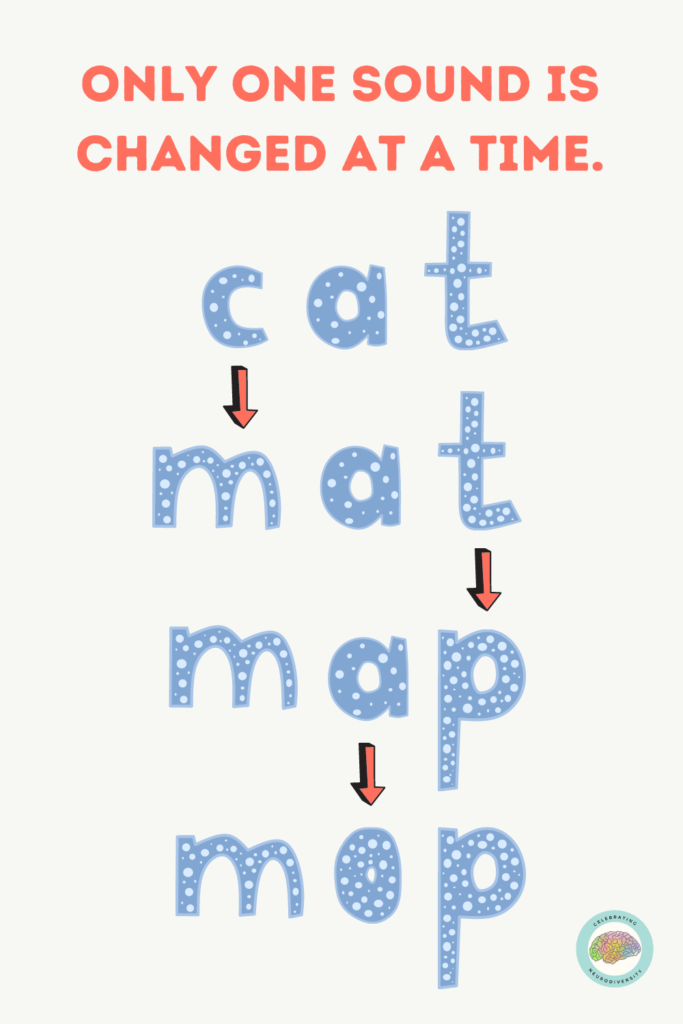
How do you use word chaining in the classroom?
It is important to create a routine with consistent procedures for word chaining. As well as discuss expectations and management of the materials. Word chaining is very versatile. It can be used in whole group, small groups, or one-on-one.
Word Chaining Routine
- The students get the needed materials for this activity. I have a list below of recommended materials.
- The teacher says the first word. It is important to say the word clearly and to use it in a sentence and/or define the word.
- The students repeat the word. Then they segment the phonemes as they match the phonemes (sounds) to the correct graphemes (letters) creating the word.
- The teacher then says a new word or letter. This word differs in only one sound. It is best to have students both decode (read) and encode (spell) multiple words.
- To encode a new word the teacher asks the students to change the word. For example, “Change cat to mat.”
- For decoding the teacher may provide a letter to switch and the students must read the word “Change the A in map to an O. What is your new word?”
- For decoding the teacher could also provide a letter sound that needs to be switched. “Change the /i/ in sit to an /a/. What is your new word?
- This is where the magic happens. The students will analyze and determine what sound was changed. The students are segmenting, blending, comparing, deleting, adding, and substituting sounds while connecting those sounds with letters for both decoding (reading) and encoding (spelling).
- Repeat steps 4 and 5 for about eight words alternating between encoding and decoding tasks.
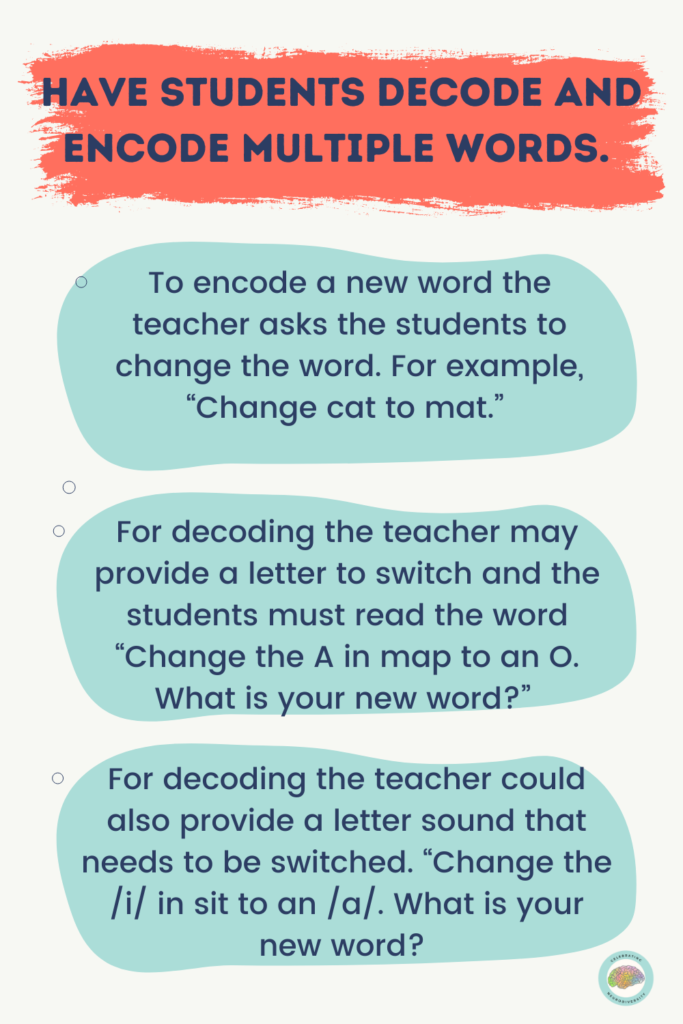
Materials
There are many options for students to create word chains. I have listed a few ideas.
- Magnetic letters or tiles
- Letter tiles with Velcro- free download here
- Dry erase marker and board
- Pencil and paper
- Computer or tablet tiles apps-
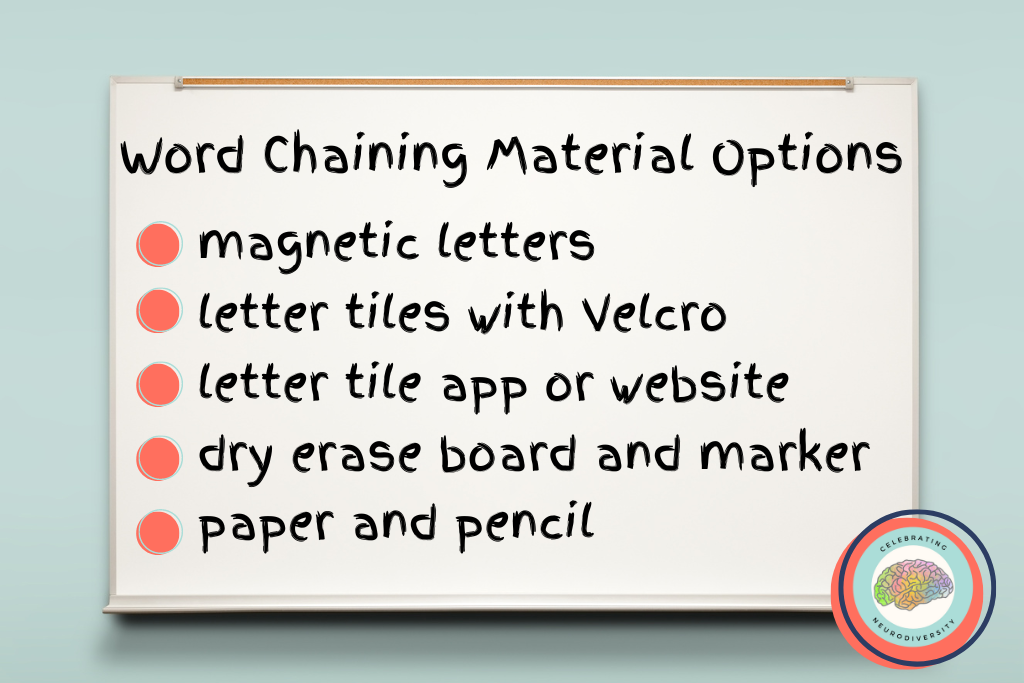
* For younger students you may want to only provide the letters students will need to create the words in the chain. This makes the activity run quicker and smoother as students aren’t searching everywhere for the letters they need and can focus more attention on the task.
Word Chaining Lists
Coming up with words to chain takes time you may not have. Here are some excellent FREE word chaining resources to use with your students.
Word Chaining for the Win!
When teachers ask me for one skill they can start incorporating into their literacy lesson that aligns with how the brain learns to read, my response is always word chaining. It is a quick and easy activity for a teacher to prepare and is such a powerful reading strategy to incorporate into literacy lessons. The linking of speech to print solidifies connections needed to orthographically map words to permanent memory and is critical to learning to read. Word chaining for the win!
Would you like to learn more about orthographic mapping?
What is Orthographic Mapping and How Can I Use it to Increase Student Success?
Are you ready to see reading success in your classroom?
Click here to get your free copy of The 4 Essentials to Reading Success

